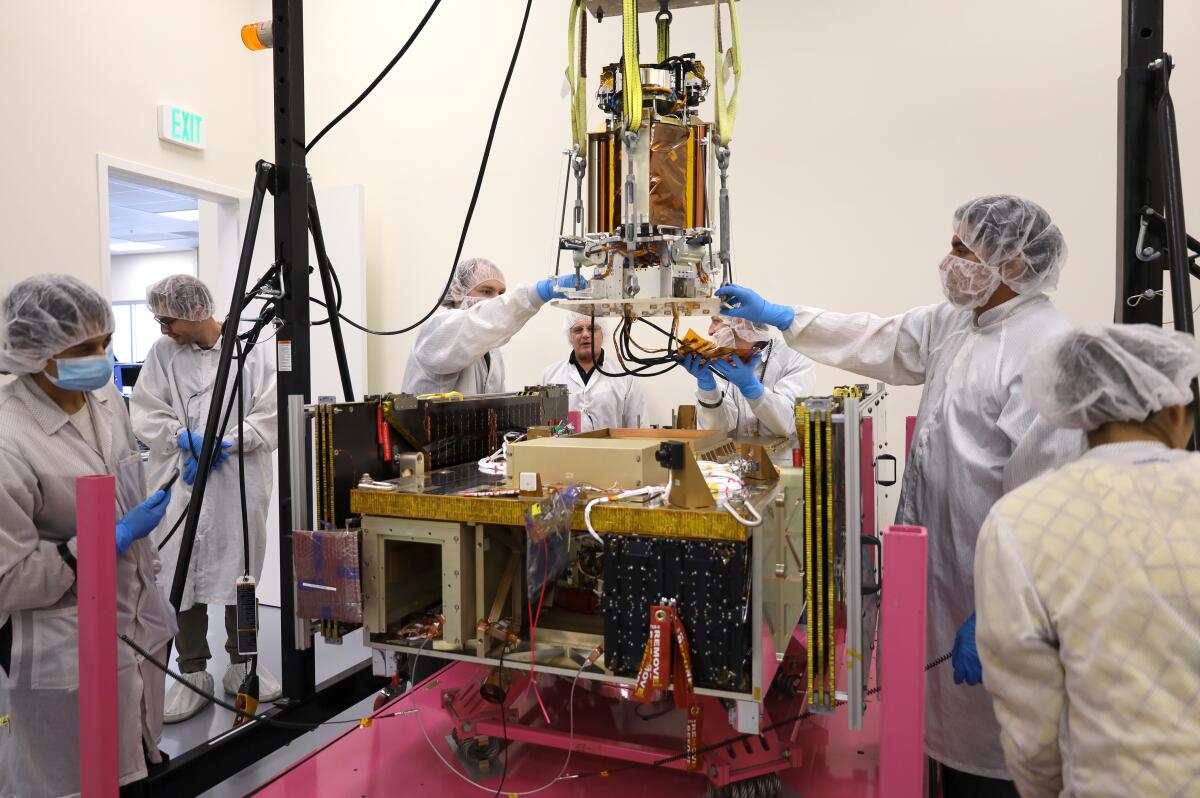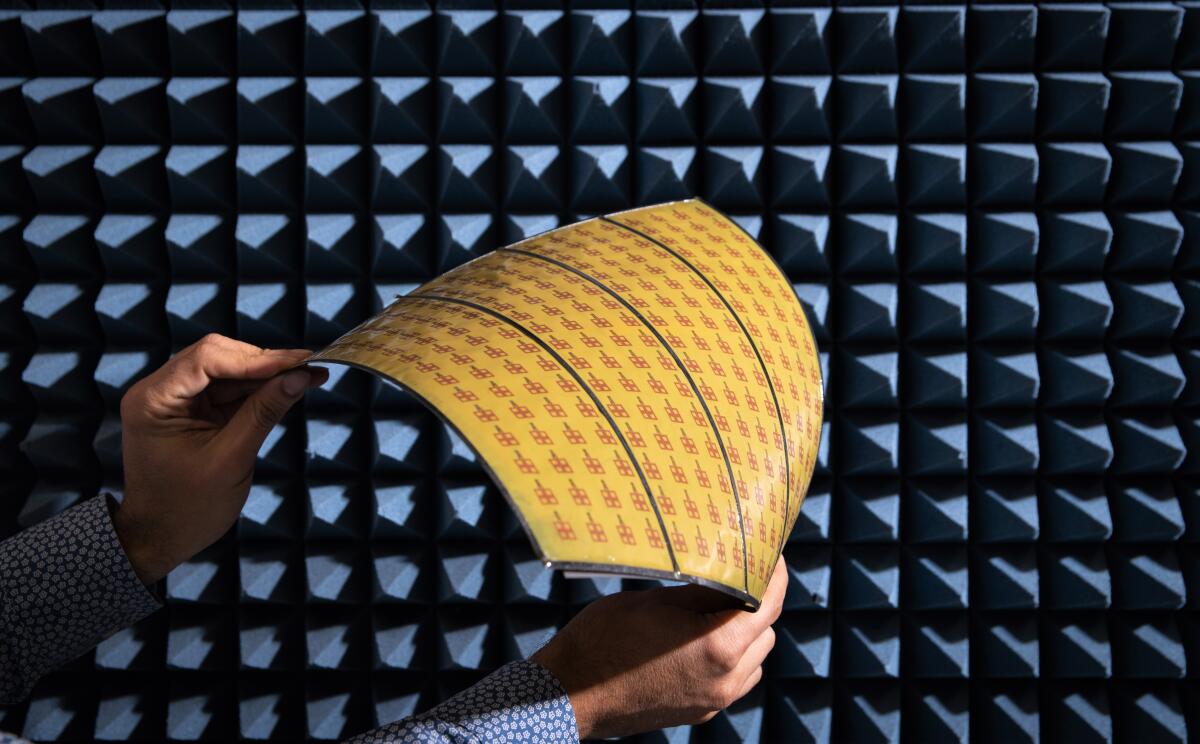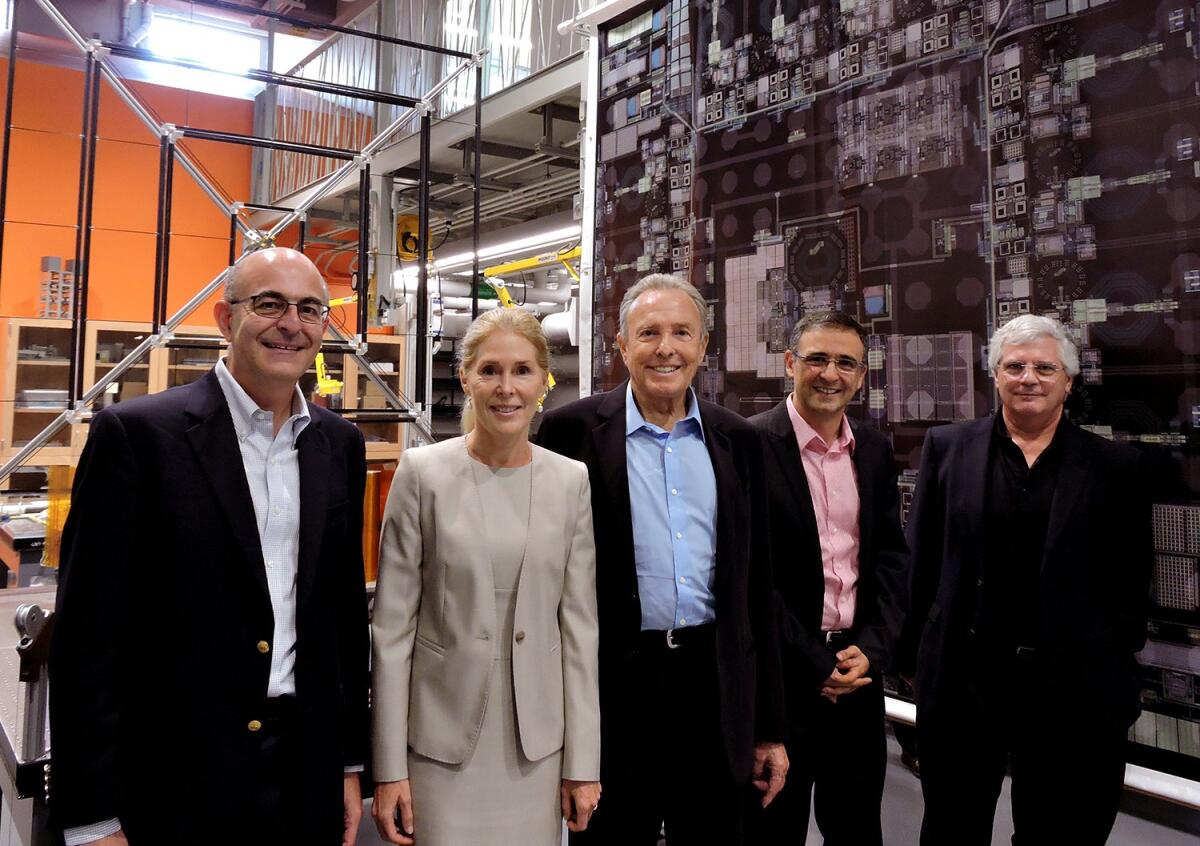Caltech prototype funded by O.C. donor beams solar power from space — a terrestrial first

- Share via
A small prototype launched into orbit in January by a team of Caltech researchers and engineers has successfully demonstrated solar energy can be harvested in space and beamed down to Earth in an endless supply.
The institution announced Thursday a power signal transmitted by a small demonstration unit orbiting 550 kilometers above the planet was recently detected by a receiver on the rooftop of a laboratory on Caltech’s Pasadena campus.
Ali Hajimiri, Bren professor of electrical engineering and one of two co-directors on the project, confirmed transmission occurred May 22.
“It took a few moments for it to sink in, then everybody got really excited,” he said in an interview Thursday. “This technology for wireless energy transfer can have a tremendous impact on lives, both on Earth and in space.”

The 50-kilogram Space Solar Power Demonstrator (SSPD-1) is testing three key technologies that would make it possible to convert sunlight into electrical energy and then send it in the form of microwaves to receivers anywhere on the planet.
The Microwave Array for Power-transfer Low-orbit Experiment (MAPLE) resulted in the May 22 transmission. A Deployable on-Orbit ultraLight Composite Experiment (DOLCE) is testing the deployment of foldable, 50-square-meter sail-like structures that open to receive sunlight.
ALBA (Italian for “dawn”) has been designed to test the performance of 32 different types of photovoltaic cells to determine which are most efficient and resilient in space.
The demonstrator — along with the data being collected over months of testing — would not have been possible without the vision and support of one Orange County philanthropist who, intrigued by an idea, set out to make it real.
Formed in 2011, Caltech’s Space Solar Power Project was made possible from more than $100 million in donations from Donald Bren, chairman of the Irvine Co. and a Caltech trustee, and his wife, Brigitte.

Bren became inspired by the capabilities of capturing solar energy in space while reading a Popular Science article that described how a half-mile band of orbiting photovoltaic cells could produce more energy than all the oil remaining on Earth.
He convened with Caltech’s then-President Jean-Lou Chameau to discuss the logistics of creating a research project that could build and launch devices capable of harvesting space-based solar power.
Another $12.5 million was provided to the university by the Northrop Grumman Corp. through a three-year sponsored research agreement.
The hard work and dedication of the brilliant scientists at Caltech have advanced our dream of providing the world with abundant, reliable and affordable power for the benefit of all humankind,
— Donald Bren
Upon hearing this week’s announcement, Bren credited the 35-member crew of principal investigators, graduate and postdoctoral students and researchers, who spent the last two years developing the demonstrator.
“The hard work and dedication of the brilliant scientists at Caltech have advanced our dream of providing the world with abundant, reliable and affordable power for the benefit of all humankind,” he said in a statement Thursday.
Current Caltech President Thomas F. Rosenbaum said the project could help overcome storage and transmission limitations impeding a worldwide transition to renewable energy.
“Beaming solar power from space is an elegant solution that has moved one step closer to the realization due to the generosity and foresight of the Brens,” he said.
“Donald Bren has presented a formidable technical challenge that promises a remarkable payoff for humanity: a world powered by uninterruptible renewable energy.”
Hajimiri believes the work being done on SSPD-1 has the potential to democratize energy, the way wireless data makes access to information globally available.
“My dream is to create this infrastructure, an ecosystem of wireless energy, across the planet,” he said. “We have a long way to go — but that’s what makes it exciting.”
All the latest on Orange County from Orange County.
Get our free TimesOC newsletter.
You may occasionally receive promotional content from the Daily Pilot.




